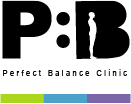This article is about jaw pain or temporomandibular joint (TMJ) disorders. This is something we increasingly see in clinic. So if you are suffering from any jaw pain, or any jaw pain related headaches, which is a very common symptom associated with TMJ disorders. Or even extreme tightness in your neck, which is kind of making you grind those teeth, this is for you.
What are the symptoms?
With jaw injuries it is very common to have a lot of pain when biting on certain crunchy objects, like an apple or a carrot. You may start to notice a bit of asymmetry in the face, where one side looks a lot more flatter compared to the other. Another symptom, which is very closely associated with jaw disorders, is headaches. Headaches across the front of the head is very common. You may also experience tightness around the neck region as a lot of these muscles are associated with each other, and they work in close sync with each other.
Getting headaches with TMJ disorders can be very disorienting. Sometimes it can cause a bit of dizziness as well. So if you are suffering from any of these symptoms, please don’t leave it, we are here to help you.
How can they be treated?
Firstly an assessment will need to be carried out on the jaw to provide a diagnosis. If there is restricted movement a manipulation can be carried out. People with TMJ disorders tend to develop a lot of tightness around the facial muscles, therefore facial massage can be beneficial. Acupuncture is also a great way of releasing the tightness; tiny needles are put into the face, mainly around the sinus areas to release any tension, which helps to completely relieve headaches as well.
Another thing that we use quite widely with TMJ disorders is K-Laser, which helps a lot in releasing any jaw pain, headaches and tension around the neck region. A good combination of muscle release work, acupuncture, and K-Laser wll get your jaw feeling better in no time.

If this article and video resonated with you then…
If you would like to achieve your goals, contact us here to provide us with your details and we will have one of our team members get in touch.








